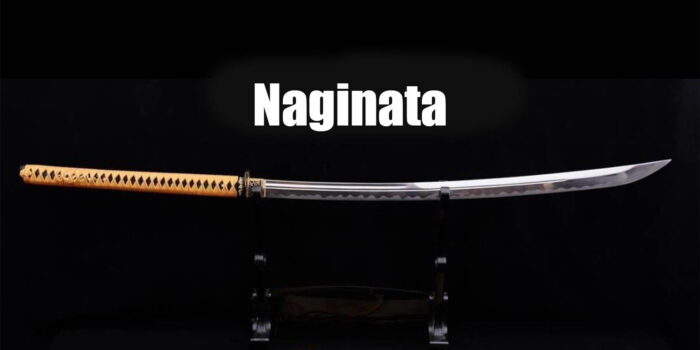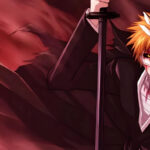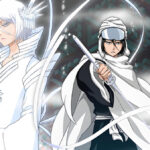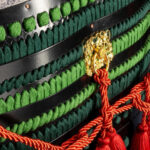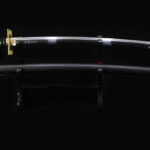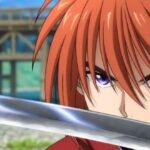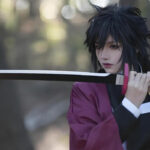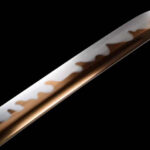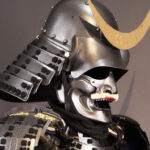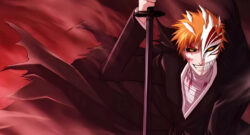Mastering the Katana: Complete Guide to Japanese Swords
Among all Japanese blade weapons, the katana stands out as a powerful symbol of tradition, elegance, and martial skill. Recognized worldwide for its curved blade and swift cutting ability, the real katana is more than a sword—it’s a reflection of the Bushido code and centuries of refined craftsmanship. Whether you’re seeking to understand how to use a katana sword or exploring various katana sword types, this guide delves into everything from design to historical context, including other iconic weapons like the female naginata.
What Are the 3 Samurai Swords Called?
Throughout the Sengoku to Edo periods, the samurai wielded a trio of blades, each with its own combat function and ceremonial significance. These three swords—katana, wakizashi, and tanto—are collectively known as the Three Samurai Swords, or “Daisho” when the katana and wakizashi are paired.
Katana: The quintessential samurai sword, usually measuring 60–80 cm with a single-edged, curved blade. Revered for its speed and precision, the katana was ideal for battlefield slashing and is widely associated with samurai honor.
Wakizashi: A shorter companion sword (30–60 cm) that played an important role in seppuku and self-defense. Always carried with the katana, it completed the Daisho set and held deep spiritual value.
Tanto: Resembling a dagger, the tanto is under 30 cm and was often used for stabbing at close range. Female warriors and courtiers sometimes carried it discreetly for protection.
Together, these swords reflect not just combat strategy but the social and spiritual hierarchy of feudal Japan.
Katana Sword Types: Variations of the Samurai Blade
While the katana may seem like a singular concept, there are in fact multiple types of samurai sword that evolved across time and needs. Each variation serves a distinct purpose:
Uchigatana: The most recognizable katana design, favored for its speed and ease of carrying.
Tachi: An older and longer sword worn with the edge down, used primarily by cavalry.
Hishizukuri Uchigatana: A rarer design with a diamond-shaped cross-section, offering unique strength and visual style.
Chokuto: A straight-bladed sword from the early historical period, seen as a predecessor of curved katana styles.
These different katanas were developed to meet the needs of both battlefield tactics and evolving samurai lifestyles.
Famous Samurai Sword Names and Katana Nicknames
Every legendary blade carries a story. Samurai sword names often reflect the swordsmith’s craftsmanship, regional origin, or folklore:
Masamune: Renowned for producing blades of harmony and superior sharpness.
Muramasa: Said to forge cursed but deadly effective swords, representing intensity and chaos.
Kotetsu: A famous blade reportedly wielded by Kondō Isami, a key historical figure.
In addition to formal names, many swords also have katana nicknames like “Wind Cutter” or “Moon Fang,” reflecting their mystical aura or slicing power.
The Female Naginata: Long-Range Elegance in Combat
An essential part of Japanese arms, the naginata is a pole weapon with a curved blade at the end, offering slashing and thrusting potential. Known as the female naginata, it was commonly used by Onna-Bugeisha—female warriors trained in combat arts during the Edo period.
The naginata vs katana debate often highlights the former’s superior reach and defensive capability. In group combat or against cavalry, the naginata’s versatility outperforms short weapons. Though not ideal for narrow-space duels, its strategic value is undeniable.
Today, the naginata is practiced in martial arts schools and dojo settings across Japan and abroad. For beginners, a wooden naginata for sale offers a safe and effective way to start learning this elegant weapon.
Parts of a Katana: Dissecting a Masterpiece
To truly appreciate or wield a katana, it’s essential to understand the parts of a katana. Each component contributes to the weapon’s function, balance, and artistic appeal:
Tsuka (Handle): Often wrapped in rayskin (samegawa) and silk or cotton cord (tsuka-ito), providing grip and control.
Tsuba (Guard): Positioned between the blade and handle, the tsuba prevents the hand from slipping and adds decorative flair. Some katana nicknames are even inspired by their guard designs.
Saya (Scabbard): Protects the blade and ensures smooth, quick drawing. Made of lacquered wood to prevent damage from humidity.
Hamon: A distinct wavy or straight line along the blade edge, created during clay tempering. This pattern signals the blade’s quality and is one of the hallmarks of a realistic katana.
Nakago (Tang): The hidden base of the blade that fits into the tsuka. It’s often signed by the swordsmith and adds to the sword’s authenticity.
Kissaki (Tip): The blade tip, which affects piercing ability and aesthetics. Different katana styles have varying kissaki designs.
How Much Does a Katana Weigh?
A standard real katana weighs between 1.1 to 1.5 kg (2.4 to 3.3 lbs). While relatively light, the weight is meticulously balanced to allow quick, fluid movements. Training swords or heavier versions may exceed this for endurance and muscle development.
How to Use a Katana Sword: From Drawing to Striking
Learning how to use a katana sword goes beyond just swinging it. Disciplines like Iaido and Kenjutsu teach formal stances, fast draws (nukitsuke), and precise cuts. Training emphasizes posture, breathing, and rhythm—making it as much a meditative art as a martial practice.
How Real Katanas Are Made: The Swordsmith’s Art
True katana sword types are forged through a rigorous, time-honored process:
Folding Steel: Layers of high-carbon steel, such as 1095 carbon steel or tamahagane, are folded to enhance strength and remove impurities. This produces the signature “hada” or grain pattern.
Clay Tempering: A technique where the spine is coated with thick clay and the edge with thin clay before quenching. This differential hardening creates the hamon and balances sharpness with flexibility.
Polishing: Performed by master artisans, this multi-stage process enhances the blade’s sharpness and visual elegance, revealing features like hamon and surface texture.
Mounting and Final Assembly: Craftsmen build and fit the tsuka, tsuba, and saya to create a unified and beautiful weapon. Inscriptions on the nakago give historical and artistic significance.
This process transforms raw steel into a real katana that embodies centuries of Japanese culture and soul.
Conclusion: A Symbol of Art, Power, and Legacy
From legendary samurai sword names to modern replicas inspired by anime swords, the katana remains a beloved icon in both Eastern and Western cultures. By understanding the parts of a katana, exploring katana sword types, and appreciating weapons like the female naginata, we uncover a deeper layer of Japan’s martial legacy.
Whether you’re collecting a realistic katana, studying how to use a katana sword, or admiring the elegance of a hand forged naginata, this knowledge brings you one step closer to the world of the samurai.
Discover authentic, battle-ready swords or elegant training models. Find your perfect katana sword type today and begin your own warrior journey.
Hand Forged Japanese Naginata Sword 1095 Carbon Steel Rayskin Saya
Hand Forged Japanese Naginata Sword 1095 Carbon Steel Rayskin Saya
